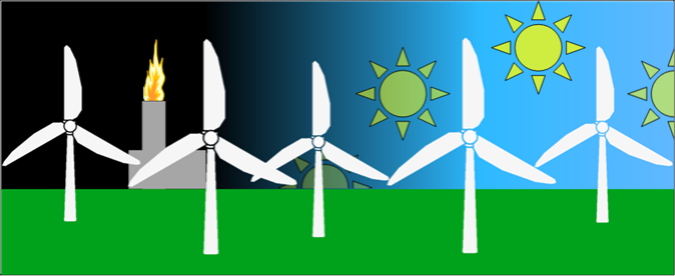When submitting a planning application for a wind development many unexpected issues can arise. One common concern can be the effect of shadow flicker upon receptors (normally dwellings) within the immediate vicinity of the development. Shadow flicker, is the flickering effect of the rotating blades as they pass between the line of sight of a viewer and a light source.
Shadow Flicker
The effects of shadow flicker, in the normal EIA sense, are associated with the movement of the sun as it passes across the sky with respect to the location of wind turbines in the surrounding environment. However we have been made aware of scenarios where shadow flicker has been experienced that isn’t due to the sun, but due to another light source – i.e. a flare stack [1]. The diagram below shows a simplified scenario of how shadow flicker may occur from a viewer’s perspective.
Shadow Flicker Flare Stacks
Flare stack shadow flicker is a very site-specific issue but can nonetheless present an additional cause for concern with regard to a proposed or already existing wind development. A video showing the Scottish wind farm, Little Raith, turning against a flare stack has been uploaded by Lochgelly.
A common and practical approach to defining a shadow flicker zone with respect to the sun (as outlined in guidance [2]) is 10x rotor diameters from 130 degrees either side of north. The duration for which sun shadow flicker can occur is dependent on the receptor location and the prevailing weather.
For a non-moving point source however, such as a flare stack, the affected zone may be more or less than 10x rotor diameters. The effect of shadow flicker could be experienced by all receptor locations where a wind turbine’s swept area is between a viewer and the flare stack. The duration of the shadow flicker event is likely to be for the length of time the flaring occurs and, in contrast to shadow flicker caused by the sun, is most likely to be of significance at night time.
Conclusion
Whilst this issue is incredibly rare, the main point to take from this article is the necessity to identify and assess (where essential) all the possible interactions between a wind development and its surrounding environment. In this instance, the effect would be dependent on the viewer location, flaring times, wind speed and wind direction.
If you have any niche wind turbine issues then please get in touch. We have a background in aviation, wireless communications and shadow flicker, and we would be happy to assist you. Call +44 (0) 1787 319001 or email info@pagerpower.com.
References
[1] Hells Barbecue, Lochgelly Website. (Last Accessed 15/12/2014)
[2] “Update of UK Shadow Flicker Evidence Base“, DECC, Prepared by Parsons Brinckerhoff, 2011. (Last Accessed 15/12/2014)

